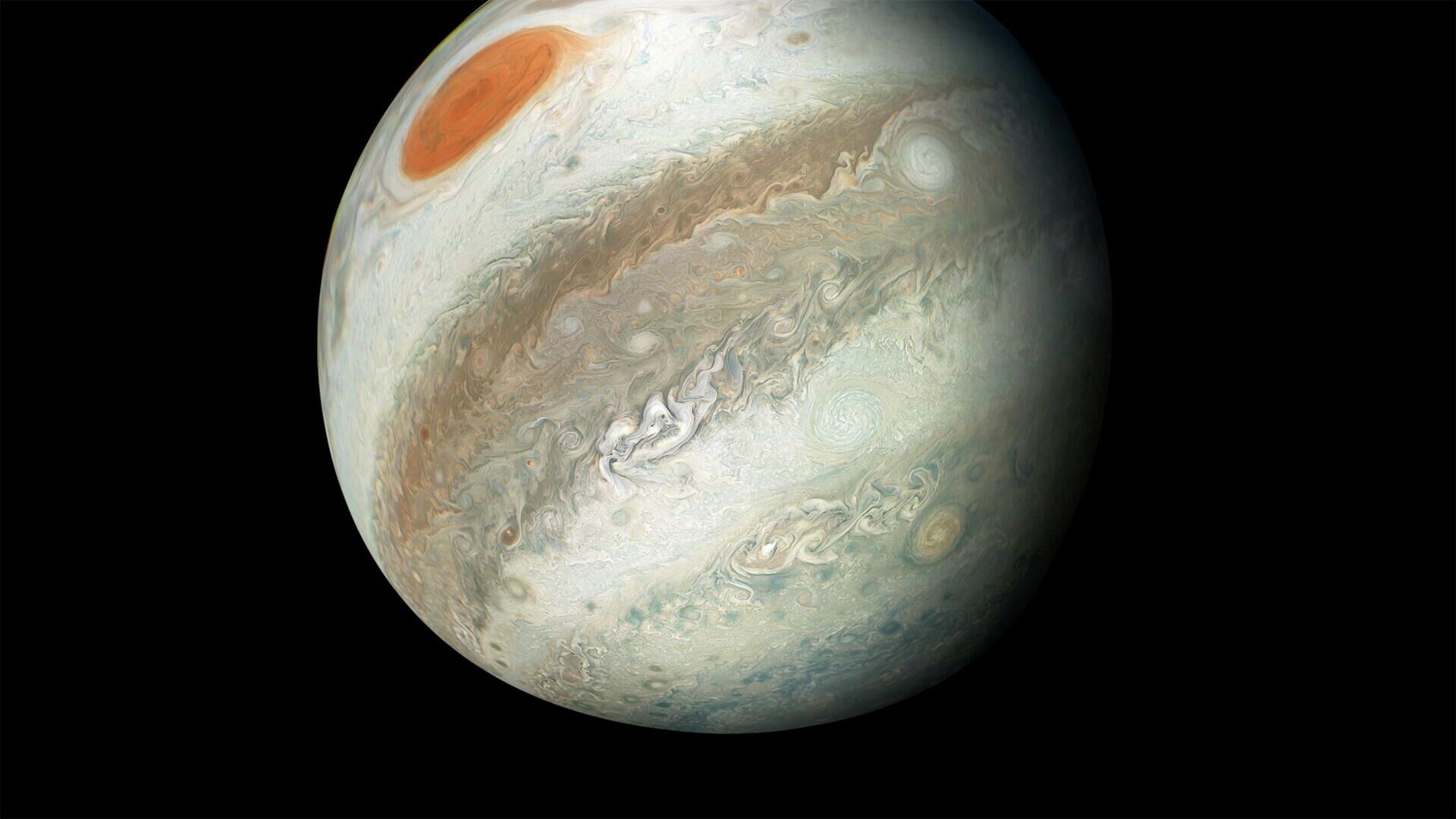https://sputnikglobe.com/20230101/nasa-probe-recovering-memory-after-radiation-surge-1105966829.html
NASA Probe Recovering Memory After Radiation Surge
NASA Probe Recovering Memory After Radiation Surge
Sputnik International
The spacecraft was studying Jupiter. The gas giant is believed to be the oldest planet in the Solar System, with any information about it potentially sheding... 01.01.2023, Sputnik International
2023-01-01T12:11+0000
2023-01-01T12:11+0000
2023-01-01T12:11+0000
science & tech
jupiter
juno
nasa
solar system
https://cdn1.img.sputnikglobe.com/img/07e5/0a/1c/1090292284_0:0:1920:1080_1920x0_80_0_0_7db01d9ac8ebd15a810f3e015ea6df2a.jpg
NASA's Juno probe is reportedly recovering its digital memory after a radiation surge forced it to reboot while on its mission to Jupiter. It is not clear whether the surge damaged the spacecraft when it was flying over Jupiter or over its volcanic moon Io. The spacecraft completed its latest flyby of Jupiter on December 14. After that, NASA discovered that it had lost direct access to Juno's memory. The team successfully rebooted the probe's computer on December 17 and placed it in “safe mode”, with only essential systems operating. However, most of the data seems to be recuperated.Juno was launched in August 2011. It traveled more than 1,7 million miles and entered Jupiter`s orbit five years later in 2016. The probe became the first spacecraft ever to see through Jupiter's clouds. During its service, Juno has already collected three terabits of data about Jupiter.
Sputnik International
feedback@sputniknews.com
+74956456601
MIA „Rossiya Segodnya“
2023
Sputnik International
feedback@sputniknews.com
+74956456601
MIA „Rossiya Segodnya“
News
en_EN
Sputnik International
feedback@sputniknews.com
+74956456601
MIA „Rossiya Segodnya“
Sputnik International
feedback@sputniknews.com
+74956456601
MIA „Rossiya Segodnya“
science & tech, jupiter, juno, nasa, solar system
science & tech, jupiter, juno, nasa, solar system
NASA Probe Recovering Memory After Radiation Surge
The spacecraft was studying Jupiter. The gas giant is believed to be the oldest planet in the Solar System, with any information about it potentially sheding light on the evolution of the latter.
NASA's Juno probe is reportedly recovering its digital memory after a radiation surge forced it to reboot while on its mission to
Jupiter. It is not clear whether the surge damaged the spacecraft when it was flying over Jupiter or over its volcanic moon Io.
The spacecraft completed its latest flyby of Jupiter on December 14. After that,
NASA discovered that it had lost direct access to Juno's memory. The team successfully rebooted the probe's computer on December 17 and placed it in “safe mode”, with only essential systems operating. However, most of the data seems to be recuperated.
"The science data from the solar-powered spacecraft's most recent flyby of Jupiter and its moon Io appears to be intact," NASA stated.
Juno was launched in August 2011. It traveled more than 1,7 million miles and entered Jupiter`s orbit five years later in 2016. The probe became the first spacecraft ever to see through Jupiter's clouds. During its service, Juno has already collected three
terabits of data about Jupiter.

